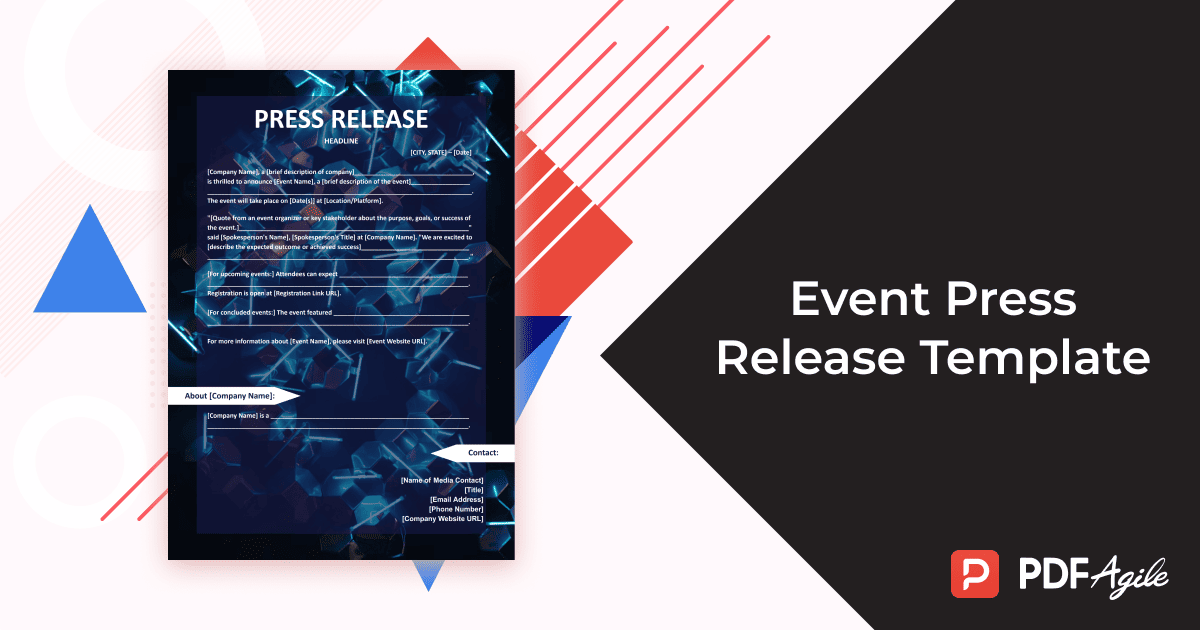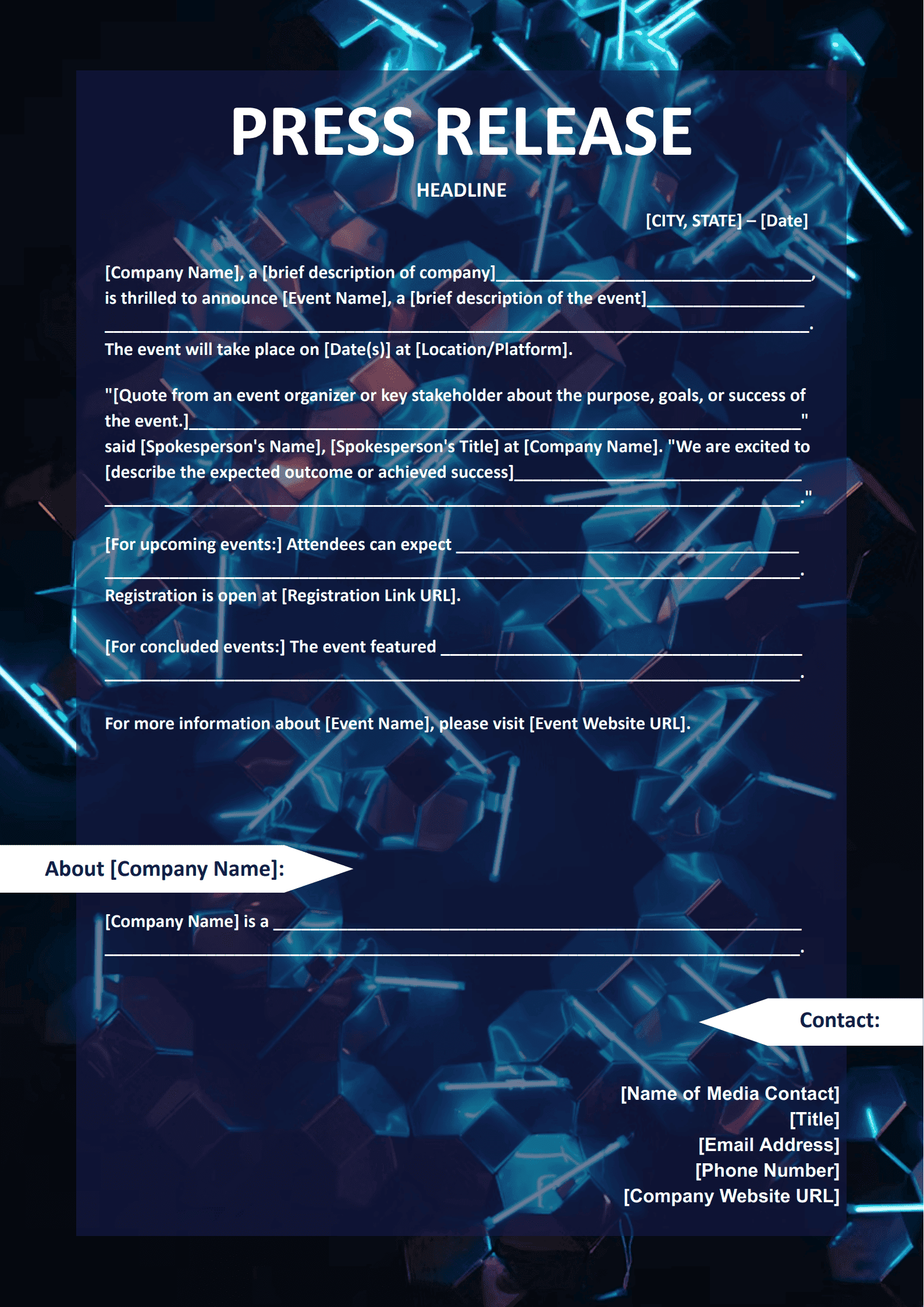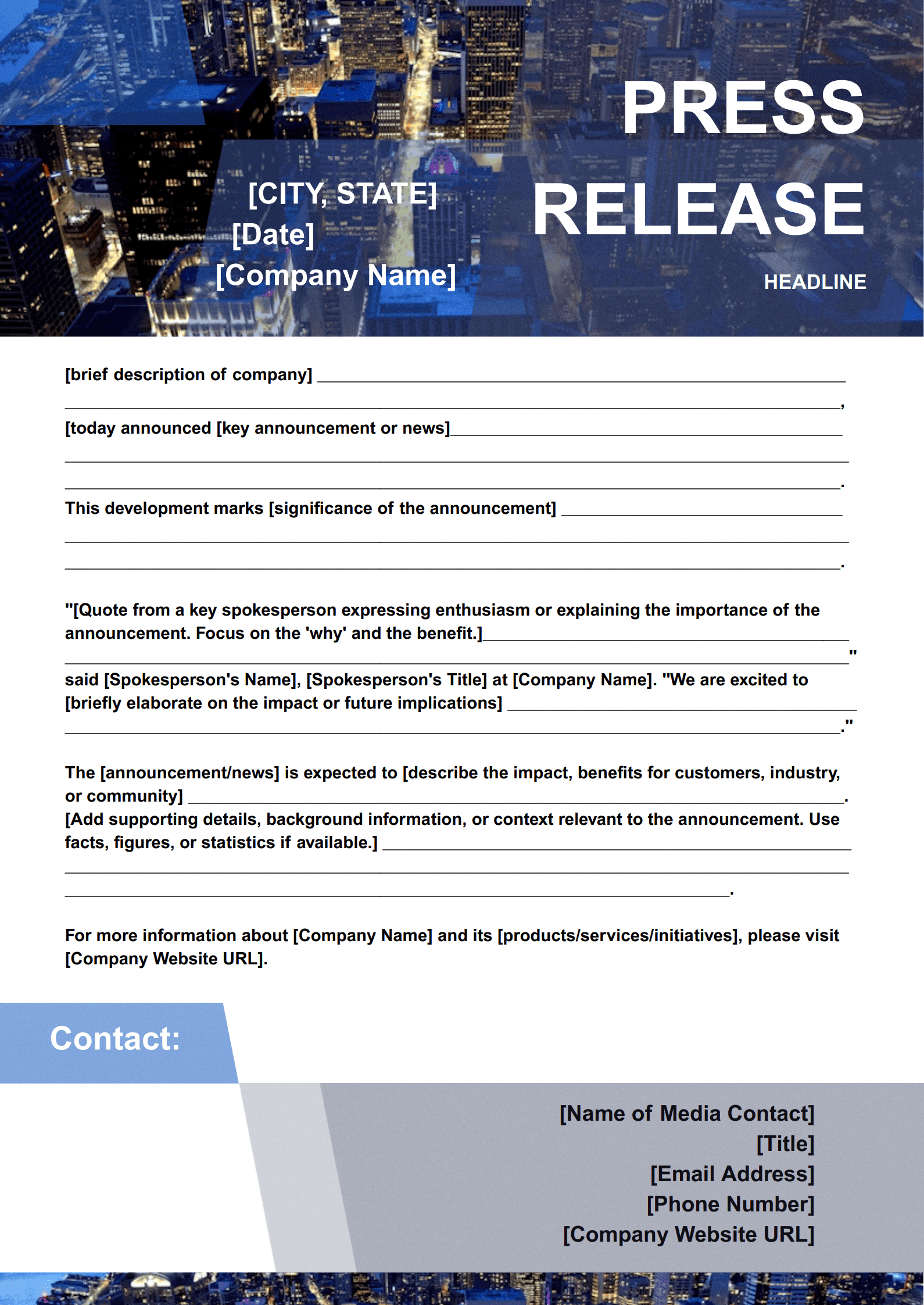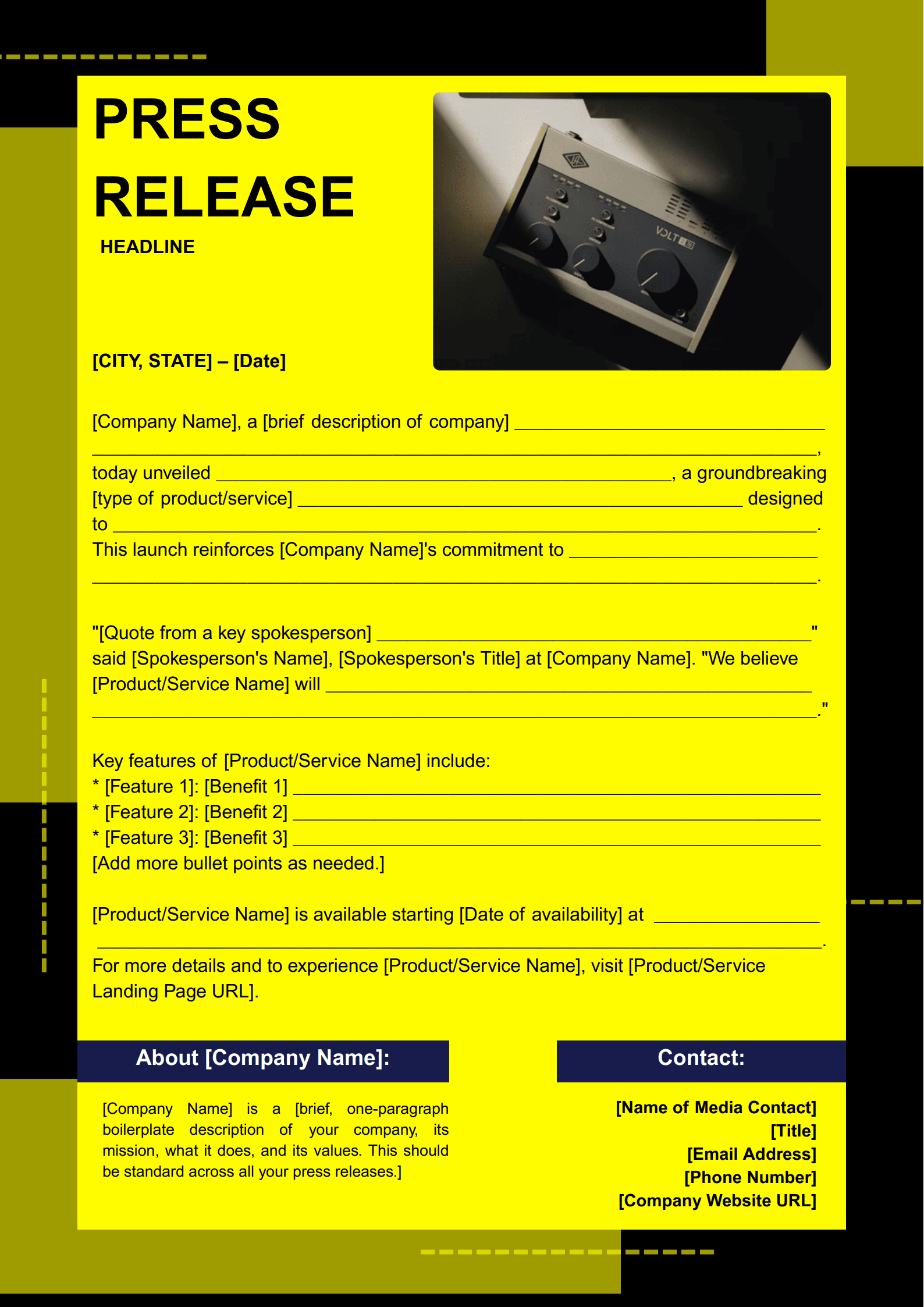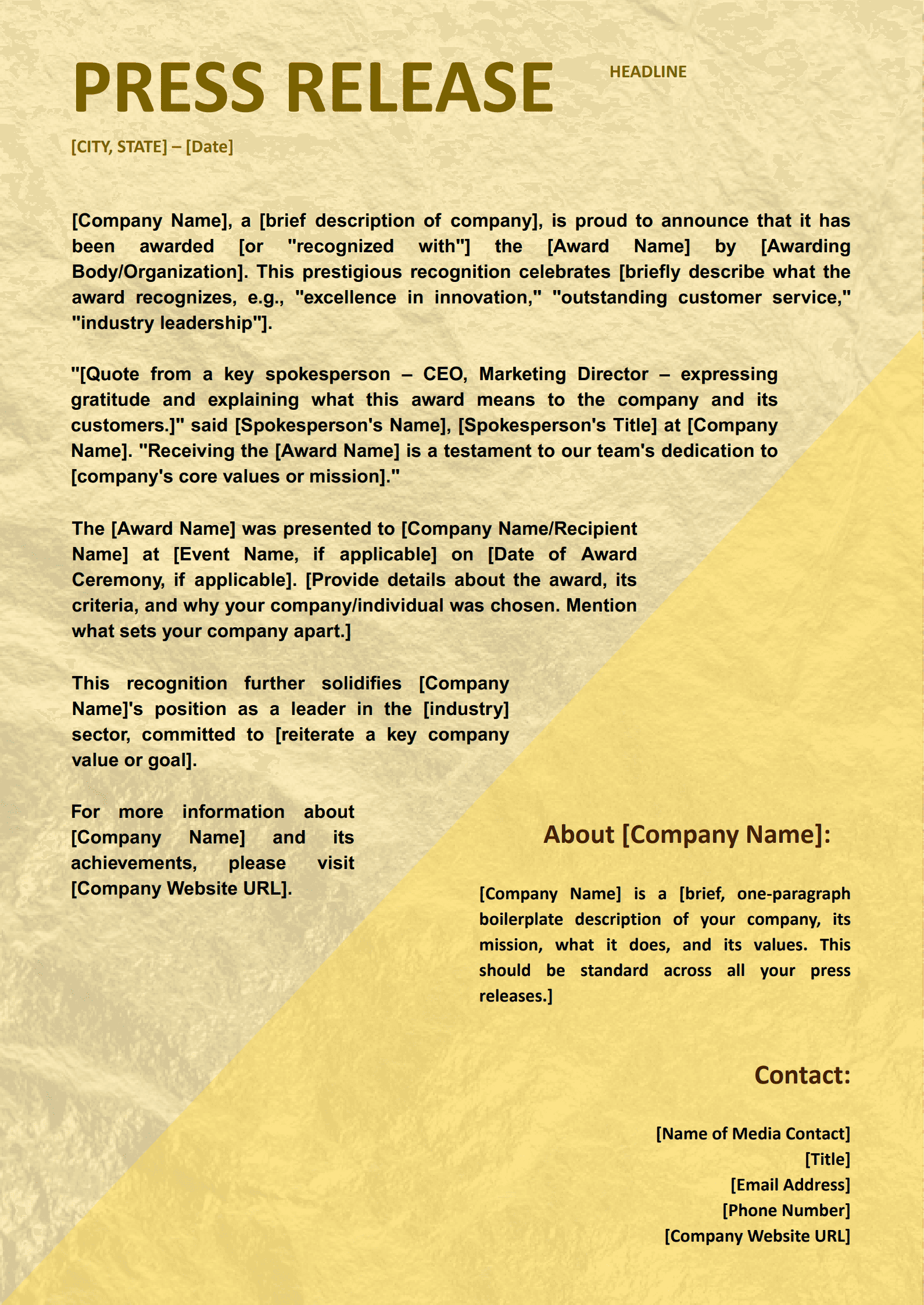Whether you're hosting a groundbreaking conference, a vibrant community festival, an exclusive webinar, or a significant charity gala, getting the word out effectively is essential to its success. A well-crafted Event Press Release is your most powerful tool for attracting attendees, securing media coverage, and building excitement around your upcoming (or recently concluded) occasion. Now that this comprehensive article will guide you through creating an impactful announcement that ensures your event receives the attention it deserves.
When to Use an Event Press Release?
An Event Press Release is a formal, official statement issued to the media to announce, promote, or summarize an event. Its primary purpose is to inform journalists, potential attendees, and the public about the details, significance, and unique aspects of your gathering.
This specialized press release is essential for:
- Announcing an Upcoming Event: Informing the public about dates, times, location, purpose, and key participants (speakers, performers, special guests).
- Inviting Media Coverage: Encouraging journalists to attend, report on, or feature your event.
- Promoting Key Aspects: Highlighting unique selling points, such as celebrity speakers, innovative topics, or exclusive experiences.
- Summarizing a Concluded Event: Sharing key takeaways, attendance figures, and notable successes after the event has taken place (often called a "post-event press release").
The goal is to generate buzz, drive registrations or attendance, and establish your event as a must-attend or a significant happening.
What does Event Press Release Differentiate from Other Related Documents?
While various documents contribute to event promotion, the Event Press Release holds a distinct role: it's specifically designed to be a news item for media consumption, aiming for earned media and third-party validation.
Let's explore its distinctions from other common event-related communications:
Compared to Event Invitation:
- Press Release: Public-facing, formal news announcement, targets media for broad coverage.
- Event Invitation: Direct-to-attendee, personalized, often includes RSVP details and more informal language, focuses on encouraging individual attendance.
Compared to Internal Event Calendar:
- Press Release: External, public announcement, focuses on newsworthiness.
- Internal Event Calendar: Internal, for employees only, lists company-wide events, meetings, and deadlines.
The fundamental difference lies in the audience and purpose. An event press release serves as an official news brief for journalists, providing them with all the necessary information to craft their own stories, thereby amplifying your event's reach through credible news channels.
An Immersive Example for Your Better Understanding
Imagine your organization has been planning its annual flagship conference for months. This year, you've secured a lineup of world-renowned keynote speakers, introduced innovative new tracks, and partnered with leading industry associations. The early bird registration is about to open, and you know this year's event is poised to be the biggest and most influential yet.
How do you generate widespread excitement? How do you ensure that industry publications, business news outlets, and potential attendees mark their calendars and rush to register? This isn't just about sending out an email; it's about signaling to the entire industry that your event is the place to be.
This is the perfect moment for the Event Press Release Template. It provides the structured, professional framework you need to announce your event's key highlights, attract media attention, and drive registrations.
Let's look at a real-world example of how a company might announce such a significant event:
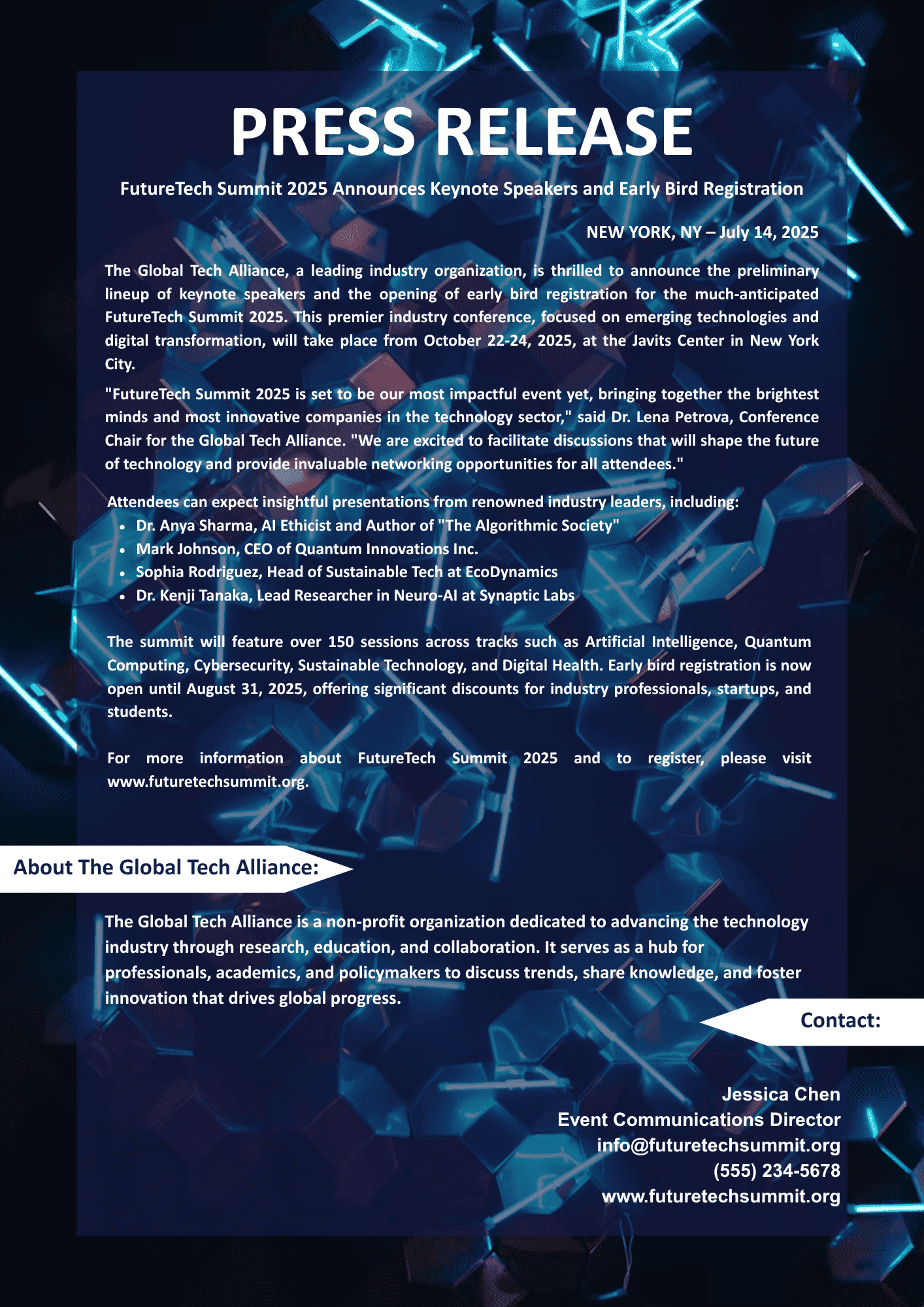
Frequently Asked Questions
Q1: When is the best time to issue an Event Press Release?
A1: For upcoming events, it's best to issue the initial press release 2-3 months in advance to allow media ample time to cover it and potential attendees to plan. A follow-up release closer to the event (e.g., 2-4 weeks prior) can highlight new speakers, a detailed agenda, or final registration deadlines. For post-event releases, issue it within 24-48 hours after the event concludes.
Q2: Should I send a separate press release for post-event coverage?
A2: Yes, a post-event press release is highly recommended. It allows you to: share key successes, highlight memorable moments or key takeaways, thank sponsors, participants, and attendees, reinforce the positive impact of the event and provide links to event recordings, photos, or summaries.
Q3: What's the difference between a "media alert" and an "event press release"?
A3: A media alert is a brief, concise notification (often one page) sent to journalists to alert them to an upcoming photo opportunity, press conference, or significant event. It's designed to be a quick "who, what, when, where" to encourage media attendance. An event press release is more comprehensive, providing a full narrative about the event, its purpose, speakers, and benefits, aiming for a full news story rather than just attendance. You might send a full press release first, followed by a media alert closer to the event day.
Free Download: Your Customizable Event Press Release Template
Need a quick and easy way to create an Event Press Release Template? Download our free, customizable template by clicking the Use Template button on this page. Simply add your specific information and print them out.
